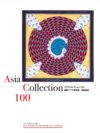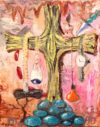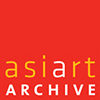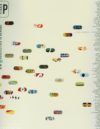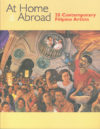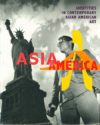Manuel Ocampo has been a vital presence on the international art scene for over twenty years, and we are very pleased to welcome him back to New York for an exhibition of new works, which marks his 60th solo show and his first in New York in four years. Born in the Philippines, Ocampo eventually moved to the United States, graduating from college in California, where he remained based for almost ten years. His first solo show, which took place in Los Angeles in 1988, set the stage for a rapid rise to international prominence. By the early 1990s, his reputation was firmly established, with inclusion in two of the most important European art events, Documenta IX (1992) and the Venice Biennale (1993).
Also in the early 1990s, he participated such museum exhibitions as Individual Realities in the California Art Scene at the Sezon Museum of Modern Art, Tokyo (1991); Helter Skelter: L.A. Art in the 1990s at The Museum of Contemporary Art, Los Angeles (1992); and Jean-Michel Basquiat & Manuel Ocampo at the Henry Art Gallery, Seattle (1994). He has subsequently participated in numerous museum exhibitions and biennials around the world, including the biennials of Gwangju (1997), Lyon (2000), Berlin (2001), Venice (2001) and Seville (2004).In 1994, he had his first major New York solo show, Stations of the Cross, at Annina Nosei Gallery. He is now the most internationally active contemporary artist from the Philippines. Currently based in Manila, he spends significant time working in the US and Europe, particularly Germany, Luxembourg, and France.
Ocampo is known for fearlessly tackling the taboos and cherished icons of society and of the art world itself. During the 1990s, he was noted for his bold use of a highly charged iconography that combined Catholic imagery with motifs associated with racial and political oppression, creatingworks that make powerful, often conflicted, statements about the vicissitudes of personal and group identities. His works illustrate, often quite graphically, the psychic wounds that cut deep into the body of contemporary society. They translate the visceral force of Spanish Catholic art, with its bleeding Christs and tortured saints, into our postmodern, more secular era of doubt, uncertainty, and instability.
Of late, his works have featured more mysterious yet emotionally charged motifs that evoke an inner world of haunting visions and nightmares. For his September – October 2010 exhibition at Tyler Rollins Fine Art, we see Ocampo looking back to his earlier fascination with religious symbols, which now reappear alongside some of his more personal, idiosyncratic motifs, such as teeth, bones, and fetuses. The subdued palette of greys, blacks, and whites seen in so many of these works heightens the feeling that we are looking into a nocturnal dream world, one that we can see only obscurely, as if through a veil. It is a world that invites the viewer to enter, but at his own risk, offering no comfort, but perhaps some promise of redemption.





